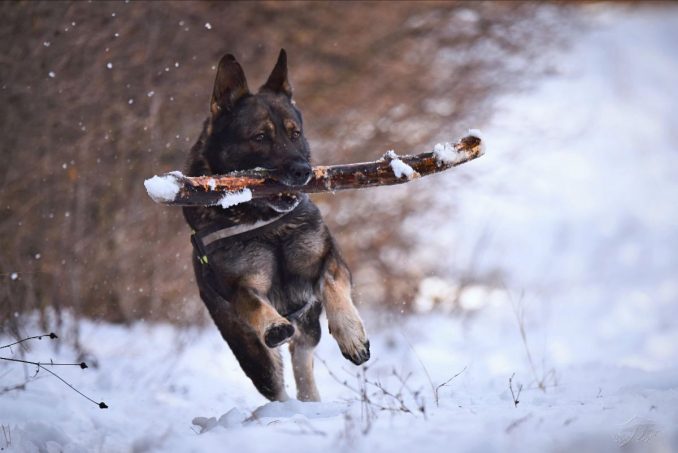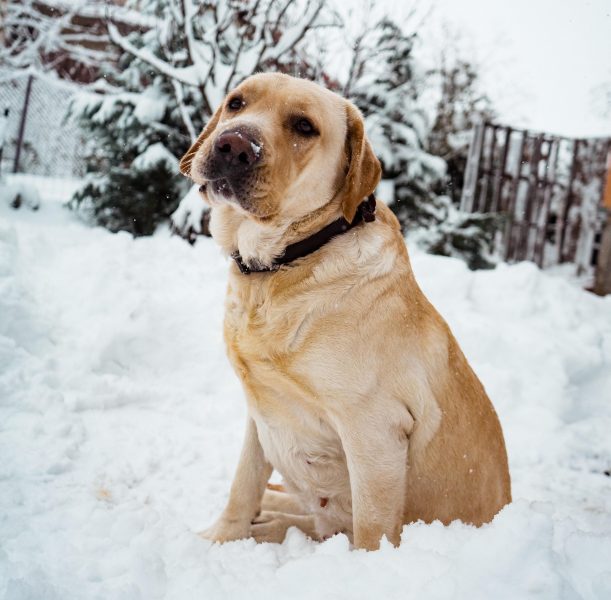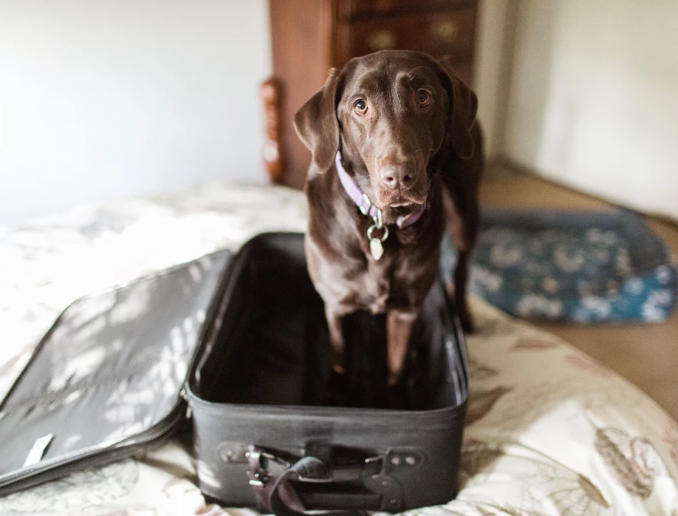Winter Safety for Dogs: Are you and your pooch prepared for the frost?
Winter may be a wonderland for dogs, but when blizzards strike, severe cold and snow can pose serious health and safety risks for dogs of all breeds. Here are a few essential tips to help keep your dog safe and happy this season:

Frostbite
Paws, ears, and tails, like human hands and faces, are susceptible to frostbite. To help protect dog paws, boots in a wide variety of styles are easily found online and in pet stores. In addition to helping tender paws stay dry, dog boots often come with soles, which also provide added traction in icy conditions. If your dog doesn’t enjoy wearing boots (or needs time to get used to them), remove caked ice and snow from your pup’s feet as soon as possible. As added protection, make sure to maintain good foot grooming. If you suspect your dog has frostbite, contact us and we can help.
Salt and Chemical Deicers
Dangerous salt and chemical deicers are widely used on sidewalks and streets, and have varying degrees of toxicity for pets. Chemical deicers containing the antifreeze material ethylene glycol are a deadly poison for dogs and cats – and it only takes a small amount to cause permanent and fatal damage to their kidneys. Road salt can cause painful burning to paw pads, and when licked off by your dog, can cause irritation and inflammation to the mouth and digestive tract. After any exposure to salt and chemical deicers, wipe off your pet’s feet with a damp towel. Always read the labels of products carefully and follow all recommended precautions.

Windchill
While some breeds are built better than others to withstand cold temperatures, prolonged exposure of dogs to wind chill and cold temperatures can cause severe problems or even death from hypothermia (low body temperature). Short-haired, very young, and elderly dogs are at the greatest risk for problems related to cold exposure. When temperatures drop, keep walks and outdoor playtime to a minimum. Dog jackets can help dogs stay warmer for longer in winter weather, but even so, don’t wait until your dog starts shivering before realizing it’s time to head back indoors.
Travelling with your pets this holiday season? Here’s everything you need to know.

If you are preparing to travel with your furry family, make sure to study up pet owners’ rights and what the rules are when it comes to air travel with your pets. Because every country and airline will have their own specific rules for pet travel, make sure you know what to expect and what restrictions are in place. It’s crucial that you research all specific details before booking your flights.
Some key things to note:
- There are a limited number of pet spots available on every flight, unless you have a service or emotional support animal
- There is usually a fee required between $50 – $300 for all standard pets to board, with the exception of service or emotional support animals
- Rules of placement are dependent on your pets species, size, weight and temperament
- Certain medical clearance and vaccine records must be presented at the time of booking, and sometimes on board the plane
- Small pet carriers and larger crates must be up to airline-specific standards in order to fit or store them on the plane – whether in the cabin or cargo areas
- Some airports have pet relief areas for before and after flights, but airplanes do not – ensure you bring some kind of pee pad or poop bags in case your pet needs to go in their carrier mid-flight
- Airlines have the right to have you and your pet removed from a flight, or to deny you and your pet boarding, if your dog acts aggressively towards airline staff or other travellers
- You may want to consider a mild sedative for your pet to ease their stress and keep them calm. Contact us for more information or to arrange to pick up an appropriate sedative for your pet.
- If you are going on a long trip, you may be required to obtain a new health certificate for the return trip

Follow these 4 steps (in order) before booking your flights and hotel stays:
- Contact the consulate of the country(s) you are traveling to and find out their entrance requirements and what paperwork you will need for entering their country with your pet(s). You can also reference the Canadian Food Inspection Agency website, which has information about travel requirements for some countries and also offers a generic blank ‘travel certificate’. It is extremely important to research the requirements thoroughly ahead of time, as some countries require certificates/tests to be done months before travel.
- Contact the airline(s) you intend to travel with to find out their travel requirements and what paperwork you will need for boarding
- If you are staying in a hotel, call ahead to inquire about their pet policy and if they have any pet-friendly rooms available
- Contact us to obtain a copy of your pet’s medical and vaccine records, including any specific documents requested by the consulate or airline
Travel Essentials Checklist:
- Updated ID tag
- Food and water bowls
- Litter supplies and dog poop bags
- Sturdy collar, harness and leash
- Medication and supplements
- Pet food and treats
- First aid kit
- Toys to keep them busy
